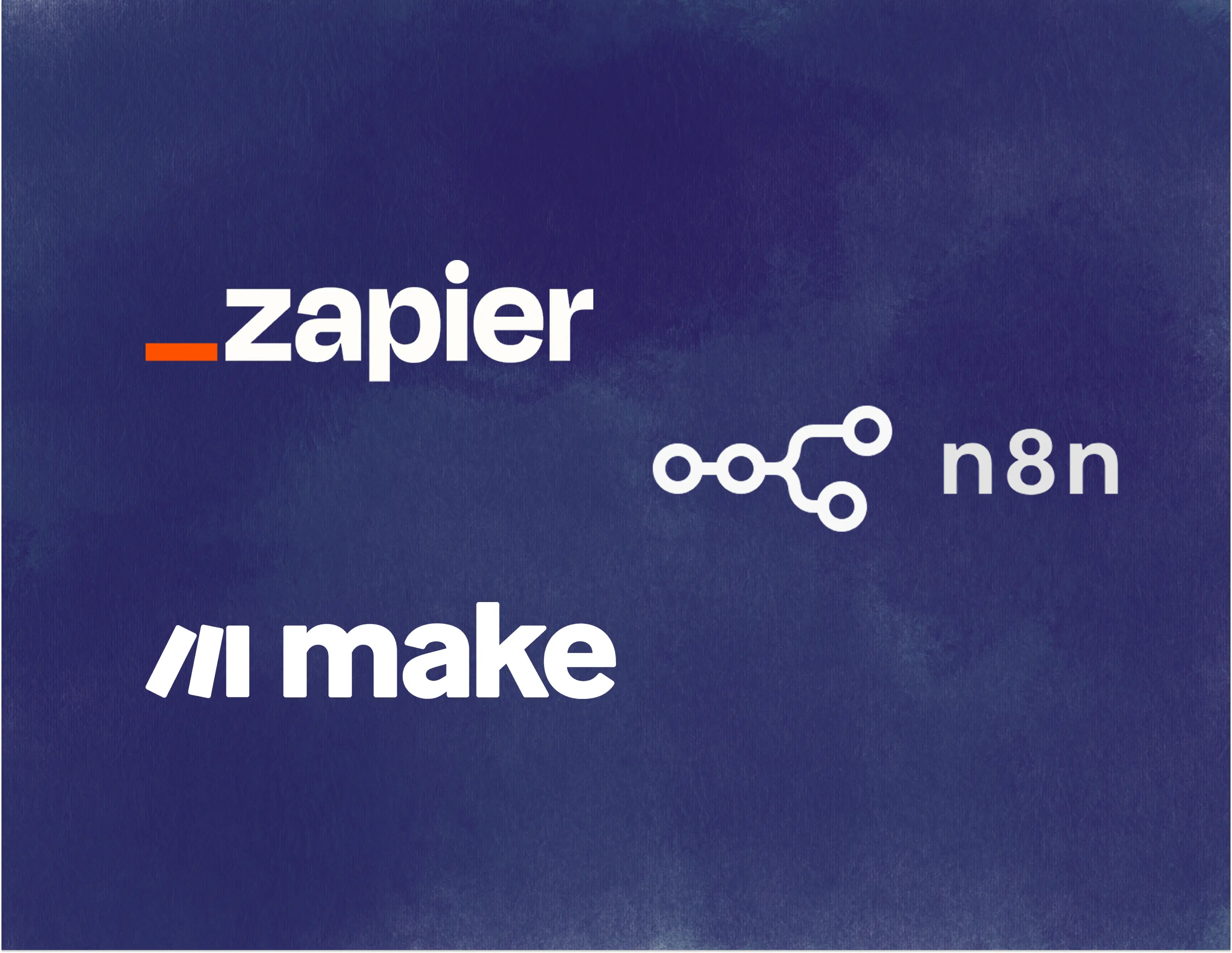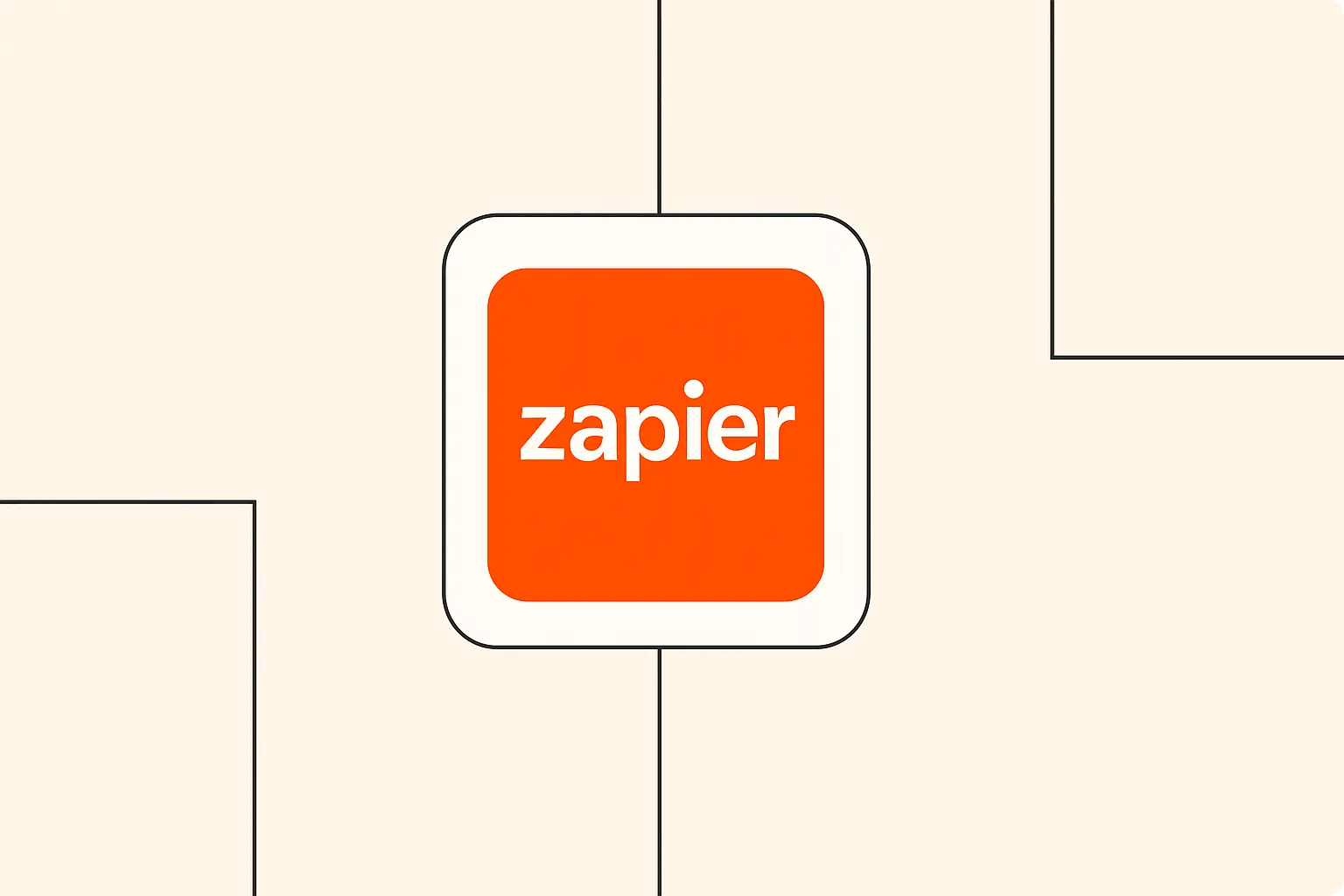
Okay, let's dive into the exciting world of AI and how it can help us tackle one of the biggest challenges many of us face: creating great blog content consistently! I'm Chloe Finch, and here at The AI Automation Guide, my goal is to make technology feel less intimidating and more like a helpful friend. Today, we're going to explore how you can use Artificial Intelligence, or AI, to automate parts of your blogging process, making it smoother and maybe even a little more fun.
I. Introduction
Do you ever feel like you're on a content treadmill? You know you need to publish blog posts regularly to connect with your audience, boost your website's visibility, and share your expertise. But finding the time, energy, and fresh ideas can feel overwhelming, right? You're definitely not alone in feeling this way! Keeping up with a consistent publishing schedule is a common hurdle for creators and businesses alike.
This is where the magic of Artificial Intelligence comes into the picture. AI isn't here to replace your unique voice or creativity; think of it more like a super-smart assistant that can handle some of the heavy lifting. Modern AI tools can help brainstorm ideas, draft sections, optimize for search engines, and even streamline your entire workflow. According to some industry observations, AI is rapidly becoming a staple in content marketing toolkits, helping teams scale their efforts significantly.
In this guide, we'll walk through everything together, step by step. We'll break down what AI content generation actually means, look at some fantastic tools you can start using, and map out how to build an automated system that works for you. By the end, you'll have a clearer understanding of how to seamlessly integrate AI into your blogging routine, freeing up your time to focus on what you do best. Let's get started!
II. Understanding AI Content Generation Basics
So, what exactly is AI content generation? At its heart, it's about using specialized computer programs, powered by artificial intelligence, to create written text automatically. Imagine feeding a topic or a few keywords into a tool, and it generates paragraphs, outlines, or even full drafts for you. It sounds like science fiction, but it's a technology that's becoming incredibly accessible and useful for everyday tasks like blogging.
There are a few different flavors of AI content tools out there. You'll often hear about Large Language Models (LLMs) like GPT-3 and GPT-4 – these are the powerful engines behind many popular tools, trained on vast amounts of text data to understand and generate human-like language. Then there are specialized writing assistants, which focus on specific tasks like grammar checking, style improvement, or generating particular types of content (like headlines or product descriptions). Finally, you have AI content platforms, which often bundle various AI writing features together in one place, sometimes adding workflow and collaboration tools. Understanding these categories helps you choose the right tool for your specific needs.
Now, AI offers some amazing benefits, especially speed and efficiency. It can help overcome writer's block and generate initial drafts much faster than starting from a blank page. However, it's really important to understand its limitations too. AI-generated content isn't perfect; it can sometimes lack nuance, originality, or the specific tone of your brand, and occasionally, it might even generate information that isn't accurate. As highlighted in discussions on platforms like Semrush, human oversight is crucial to ensure quality, factual accuracy, and authenticity. Think of AI as a powerful starting point, not the finished product.
III. Essential AI Content Generation Tools
Choosing the right tools can feel a bit daunting at first, but don't worry! We can break them down into a few helpful categories. Let's look at some popular options that beginners often find useful.
A. Complete Content Platforms
These platforms are often designed to be all-in-one solutions, helping with various stages of content creation. They typically use powerful AI models to generate longer pieces of text based on your prompts.
One well-known platform is Jasper.ai. Jasper is popular for its wide range of templates designed for different content types, from blog posts to social media updates and ad copy. It aims to help you create high-quality content quickly by guiding the AI with specific instructions. Many users find its interface relatively intuitive to get started with.
Another strong contender is Copy.ai. Similar to Jasper, Copy.ai offers numerous templates and focuses on generating creative copy for marketing and sales. It's often praised for its ability to generate multiple options rapidly, making it great for brainstorming headlines or different angles for your content. It provides a structured way to interact with the AI to get the results you need.
WriteSonic is also worth exploring. It positions itself as an AI writer that helps create SEO-friendly content. WriteSonic includes features for generating blog posts, landing pages, and ads, often integrating tools for paraphrasing and expanding text, which can be handy during the drafting process.
B. AI Writing Assistants
These tools usually focus more on refining and improving text you've already written, rather than generating long-form content from scratch. They act like helpful editors, catching errors and suggesting improvements.
You're probably familiar with Grammarly. It's excellent for catching grammar mistakes, spelling errors, and punctuation issues. The premium version also offers suggestions for clarity, tone, and style, helping you polish your writing effectively. It integrates with many platforms, making it easy to use wherever you write.
The Hemingway Editor takes a different approach, focusing specifically on making your writing bold and clear. It highlights lengthy, complex sentences, passive voice, and excessive adverbs, encouraging simpler, more direct communication. This can be incredibly helpful for ensuring your blog posts are easy for readers to understand.
ProWritingAid is a more in-depth writing assistant, offering detailed reports on style, grammar, readability, and even potential plagiarism. It's often favored by authors and editors for its comprehensive analysis, helping you improve your writing skills over time. While it might have more features than a beginner needs immediately, it's a powerful tool for refining your final drafts.
C. Integration Platforms
These platforms are the secret sauce for automating your workflow. They connect different apps and tools, allowing them to talk to each other and perform actions automatically based on triggers you set up.
Zapier is perhaps the most well-known integration platform. It supports thousands of apps, allowing you to create automated workflows (called "Zaps") without needing to code. For example, you could set up a Zap to automatically send a completed blog draft from an AI writer to your editing tool or content calendar. Zapier's own blog often discusses how AI tools can be integrated into these workflows.
Make.com (formerly Integromat) is another powerful visual automation platform. It allows you to build complex workflows by connecting different modules together. It offers a high degree of flexibility and is often preferred for more intricate automation scenarios involving multiple steps and conditional logic.
n8n.io is a fantastic option if you prefer open-source tools or want the ability to self-host your automations. It provides a visual workflow editor similar to Zapier and Make, connecting various services and APIs. It's highly extensible and can be a cost-effective solution, especially as your automation needs grow.
IV. Building Your AI Content Automation Workflow
Okay, now that we know about some helpful tools, let's think about how to actually build a system that automates parts of your blogging process. We can break this down into phases: planning, generating the content, and what happens after the draft is ready. Remember, the goal isn't 100% automation, but seamless integration where AI assists you.
A. Planning Phase
Good content starts with good planning. AI can even help here! You can use automation tools to streamline setting up your content calendar. For instance, you might use a tool like Zapier to automatically add researched topic ideas from a spreadsheet or a research tool directly into your calendar app (like Google Calendar or Trello).
Topic research itself can be partially automated. While human insight is key for understanding your audience, AI tools can analyze trends, competitor content, or search data to suggest relevant topics. Some SEO platforms are integrating AI to speed up this discovery process. Similarly, keyword research integration can be smoother; you might use an AI tool to generate keyword ideas based on a core topic, and then use an automation platform like Make.com to pull those keywords into your content briefs or planning documents.
Think about setting up a system where new industry trends flagged in an RSS feed could trigger an AI to brainstorm related blog post angles. This keeps your planning dynamic and responsive. The key is connecting your research inputs to your planning outputs more efficiently.
B. Content Generation Phase
This is where AI writers really shine. You can start by creating content briefs automatically. Imagine having a template for your blog post briefs; you could use an automation platform to populate parts of this brief (like target keywords, suggested headings based on research) before you even start writing or prompting the AI. This ensures consistency and gives the AI clear direction.
Next, you can set up AI content generation triggers. Using platforms like Zapier or n8n.io, you could trigger an AI writing tool (if it has an API or integration) to generate a first draft whenever a new topic is approved in your project management tool. For example, moving a task card to an "Approved Topics" list could automatically kick off the drafting process in a tool like Jasper.ai or WriteSonic.
Crucially, you need to implement quality control checkpoints. Automation shouldn't mean publishing untouched AI content. Build steps into your workflow where a human must review the draft. This could be a notification sent via Slack or email once the AI draft is ready, prompting you or a team member to step in for editing and refinement. This blend of speed and oversight is vital.
C. Post-Generation Phase
Once the initial AI draft is generated, the work isn't over, but automation can still help. You can set up automated editing and proofreading workflows. For instance, a generated draft could be automatically sent to Grammarly or ProWritingAid for initial checks before human review. This catches basic errors early on.
SEO optimization workflows are another great area for automation. After human editing, the draft could be sent to an SEO tool or checklist (perhaps integrated via Zapier) to ensure keywords are used appropriately, meta descriptions are present, and other on-page factors are addressed. Some AI tools are even incorporating SEO suggestions directly, as noted by resources like Ahrefs.
Finally, consider image generation and insertion. While still evolving, AI image generation tools are becoming more capable. You might automate parts of this by having your system suggest relevant image themes based on the content, or even trigger an AI image generator to create options. The insertion might still require manual placement, but streamlining the sourcing can save time.
V. Best Practices for AI Content Automation
Using AI for content is exciting, but it's important to do it thoughtfully. Just letting an AI run wild without guidance usually doesn't lead to the best results. Here are some best practices I always recommend keeping in mind.
First and foremost is maintaining content quality. AI can generate text quickly, but speed shouldn't come at the expense of value. Always review and edit AI-generated content thoroughly. Ensure it's accurate, helpful, engaging, and provides real insight to your readers. Remember, search engines like Google prioritize high-quality, helpful content created for people, regardless of how it was produced.
Related to quality is ensuring originality and authenticity. AI models learn from existing data, so there's a risk of generating content that's generic or too similar to other sources. Always add your unique perspective, experiences, and brand voice. Use AI as a starting point or assistant, not a complete replacement for your creativity. Tools like the Content Marketing Institute often emphasize the need for unique angles even when using AI assistance.
This leads directly to balancing AI and human input. This is probably the most crucial best practice. Think of it as a partnership. Let AI handle repetitive tasks, brainstorming, or first drafts, but rely on human judgment for strategy, nuance, fact-checking, editing, and injecting personality. Finding that sweet spot is key to leveraging AI effectively without sacrificing the human touch that connects with your audience.
Establish clear content review processes. Define who reviews the AI-generated content, what they check for (accuracy, tone, originality, SEO), and how feedback is incorporated. This structured approach ensures consistency and maintains your quality standards, even when using automation. This might involve checklists or specific stages in your project management tool.
Finally, always keep SEO considerations in mind. While AI can help generate keyword-rich text, ensure it reads naturally and focuses on user intent. Don't just stuff keywords. Use AI to help structure content logically with clear headings (like the H2s and H3s we're using here!) and optimize elements like meta descriptions and title tags, but always prioritize the reader experience. Insights from SEO resources like Semrush consistently highlight the importance of human-centric SEO.
VI. Step-by-Step Automation Recipe
Alright, let's put this all together into a simplified, step-by-step recipe. This is just one example, and you can definitely customize it to fit your specific tools and needs!
- Initial Setup and Tool Integration:
- Choose your core tools: an AI content platform (like Jasper.ai or Copy.ai), a writing assistant (like Grammarly), and an integration platform (Zapier, Make.com, or n8n.io).
- Connect these tools using your chosen integration platform. Authorize the connections so they can talk to each other. For example, connect your project management tool (like Trello or Asana) to your AI writer via Zapier.
- Creating Automation Triggers:
- Define what starts the process. Let's say moving a task card in your project management tool to a list called "Ready for AI Draft" is your trigger.
- Set this up in Zapier or Make. The trigger is "Card Moved to List 'Ready for AI Draft'".
- Content Generation Workflow:
- Configure the action following the trigger. This would be sending the topic or brief details from the task card to your AI content platform.
- Instruct the AI platform (via the integration) to generate a first draft based on those details. You might specify length, tone, or key points to include.
- Set up a subsequent action: Once the draft is generated, have the integration platform save it (e.g., to a Google Doc) or send it to a specific location.
- Quality Control Measures:
- Add another step in your automation: Send a notification (e.g., via Slack or email) to the designated editor/reviewer, including a link to the generated draft. The message could be: "AI draft for '[Topic]' is ready for review."
- The human reviewer then edits, fact-checks, adds personal insights, and ensures brand voice alignment. They might use tools like the Hemingway Editor or Grammarly during this stage.
- Publication and Distribution:
- Once reviewed and finalized, the content can be manually uploaded to your CMS (like WordPress).
- Optionally, you could add further automation steps, like creating social media snippets from the final post using another AI tool or scheduling the post via an integration if your CMS supports it.
This recipe provides a basic framework. Don't be afraid to start simple and add more steps as you get comfortable!
VII. Common Challenges and Solutions
Embarking on AI content automation is exciting, but like learning any new skill, you might encounter a few bumps along the road. Let's talk about some common challenges and how you can navigate them.
One challenge is dealing with AI limitations. Sometimes the AI might generate text that's repetitive, factually incorrect, or just... weird. The solution here is robust human oversight. Always treat AI output as a draft that needs careful review, editing, and fact-checking. Don't expect perfection straight out of the box; use it as a tool to augment, not replace, your judgment.
Maintaining brand voice can also be tricky. AI tools often have a generic tone unless carefully prompted. To solve this, create detailed style guides and use specific instructions (prompts) when generating content. You might tell the AI, "Write in a warm, encouraging, and simple tone, like a helpful tutor explaining this to a beginner." You'll also need to heavily edit the output to infuse your unique personality and brand perspective.
Worried about ensuring content uniqueness? This is a valid concern, as AI learns from existing data. The key is adding significant human value. Use AI for structure or initial ideas, but layer in your own original thoughts, experiences, case studies, and analysis. Run final drafts through plagiarism checkers if needed, but focus on making the content distinctively yours. Resources like Ahrefs often stress that truly valuable content requires this human element.
Managing costs effectively is another practical consideration. Many AI tools operate on subscription models or usage credits. Start by identifying the specific tasks where AI provides the most value for you. Don't subscribe to every tool; choose strategically. Track your usage and evaluate the return on investment – is the time saved and output generated worth the cost? Explore free trials or lower-tier plans first.
Finally, scaling considerations might arise as you produce more content. How do you maintain quality when increasing volume? The solution involves standardized workflows and clear review processes, as we discussed earlier. Ensure everyone involved understands the process, the quality standards, and the importance of the human touch. Consider using templates and checklists to maintain consistency as you scale.
VIII. Advanced Tips and Strategies
Once you're comfortable with the basics, there are some more advanced ways to leverage AI content automation. These might require a bit more technical know-how, but they can unlock even greater efficiency.
Consider exploring custom API integrations. Many AI tools and platforms offer Application Programming Interfaces (APIs). If you have some technical skills or resources, you can use APIs to build highly customized workflows that go beyond what standard integration platforms like Zapier might offer out-of-the-box. This allows for deeper integration with your existing systems.
Template creation and management within AI tools is another powerful strategy. Spend time refining the prompts and templates you use to generate specific types of content (e.g., listicles, how-to guides, case studies). Well-crafted templates lead to more consistent and higher-quality AI output, reducing the amount of editing needed. You can save these templates within tools like Jasper.ai or manage them externally.
Think about content repurposing automation. AI can be fantastic at transforming existing content into different formats. You could set up an automation where a finalized blog post triggers an AI to generate social media updates, video script outlines, or email newsletter summaries based on that post. This maximizes the value you get from each piece of content.
Lastly, focus on performance tracking and optimization. Don't just automate and forget. Use analytics to track how your AI-assisted content performs (engagement, traffic, conversions). Use these insights to refine your prompts, topics, and workflows. Maybe AI-generated posts on certain topics perform better, or perhaps a specific template needs tweaking. Continuous optimization is key.
IX. Measuring Success
Creating content is great, but how do you know if your AI-assisted efforts are actually working? Measuring success is crucial for understanding the impact and justifying the investment in tools and time.
Start by identifying the key metrics to track. These will depend on your goals, but common ones include website traffic to your blog posts, time spent on page, bounce rate, social shares, comments, and conversions (like newsletter sign-ups or product purchases originating from the post). Choose metrics that align directly with why you're creating content in the first place.
Integrate your website with analytics tools like Google Analytics. Set up tracking to monitor the performance of individual blog posts. You might even tag content created with AI assistance to compare its performance against purely human-written content over time, although the goal is often a seamless blend.
Calculate the Return on Investment (ROI). This involves comparing the costs (tool subscriptions, time spent editing/managing) against the benefits (time saved, increased traffic/leads/sales). While attributing direct sales can be tricky, you can estimate the value of increased traffic or the cost savings from reduced writing time. A positive ROI indicates your automation strategy is paying off. According to some reports, marketers using AI often cite efficiency gains as a primary benefit, which contributes positively to ROI.
Don't forget quality assessment methods. Success isn't just about numbers; it's also about quality. Regularly review your published content against your style guide and quality standards. Solicit feedback from readers through comments or surveys. Ensure the content remains helpful, accurate, and engaging, reflecting positively on your brand.
X. Conclusion
Wow, we've covered a lot of ground together! We started by acknowledging the challenge of consistent content creation and saw how AI can step in as a valuable assistant. We explored different types of AI tools, from comprehensive platforms like Jasper.ai and Copy.ai to helpful assistants like Grammarly and powerful integrators like Zapier.
We then mapped out how to build an automated workflow, emphasizing the importance of planning, careful generation, and thorough post-generation steps like editing and SEO optimization. Remember those crucial best practices: always prioritize quality, maintain your unique voice, balance AI with essential human input, establish clear review processes, and keep SEO in mind. We even walked through a step-by-step recipe to get you started and discussed common challenges and advanced strategies.
The key takeaway? AI content generation isn't about replacing humans; it's about augmentation. It's about using smart tools to handle repetitive tasks, spark ideas, and streamline processes, freeing you up to focus on strategy, creativity, and connecting with your audience. Your next step could be exploring a free trial of one of the tools mentioned or trying a simple automation, like connecting your topic idea list to your calendar. The future of content creation likely involves an even deeper, more seamless integration of AI, making workflows smarter and more efficient.
XI. Additional Resources
Ready to keep learning and exploring? Here are some resources to help you on your AI content automation journey:
- Recommended Tools and Platforms:
- AI Content Platforms: Jasper.ai, Copy.ai, WriteSonic
- AI Writing Assistants: Grammarly, Hemingway Editor, ProWritingAid
- Integration Platforms: Zapier, Make.com, n8n.io
- Further Reading:
- Community Resources: Look for forums or groups dedicated to AI in marketing or specific tools (many platforms have user communities).
- Updates and Developments: The field of AI changes rapidly! Keep an eye on tech news sites and blogs like ours at The AI Automation Guide for the latest advancements.
[Call to Action: Ready to streamline your blogging? Start your AI content automation journey today! Explore our recommended tools and begin building your first workflow.]
Meta Description Suggestion:
Learn how to use AI for content generation to automate your blog posts seamlessly. This guide covers AI tools, workflows, best practices, and step-by-step automation recipes for beginners.










